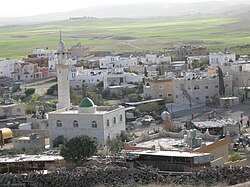Contents
Drijat דריג'את دريجات | |
|---|---|
 | |
| Coordinates: 31°18′4″N35°4′34″E / 31.30111°N 35.07611°E | |
| Country | |
| District | Southern |
| Council | Al-Kasom |
| Population (2022) [1] | 1,339 |
Drijat (Arabic : دريجات; Hebrew : דריג'את), also known as Draijat, is an Arab village in southern Israel. Located in the Negev desert near Arad, between Kuseife and the Yatir Forest, it falls under the jurisdiction of al-Kasom Regional Council. In 2022 its population was 1,339. [1]


